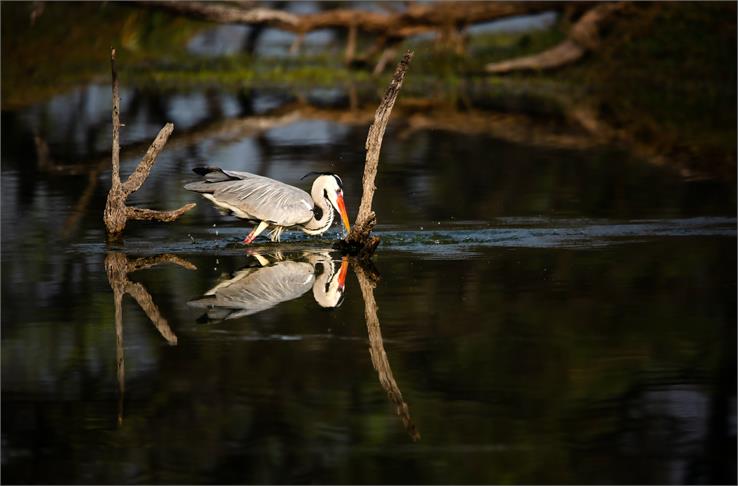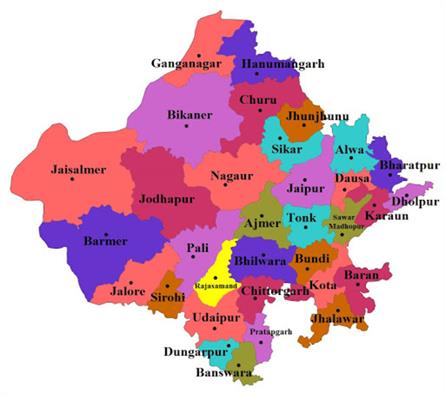Keoladeo National Park: A Biodiversity Conservation

“There is nothing more rewarding than experiencing the beauty and serenity of nature firsthand," said John Muir, a renowned naturalist and preservationist.
National parks offer the perfect opportunity to do just that, providing an escape from the hustle and bustle of everyday life and a chance to connect with the natural world. Whether you are looking to hike, camp, or simply admire the stunning vistas, there's something for everyone in these treasured wilderness areas. So, let's get ready to explore the wonders of Keoladeo National Park! Keoladeo National Park, formerly known as Bharatpur Bird Sanctuary, is a UNESCO World Heritage Site located in the northwestern state of Rajasthan, India. The park is a haven for biodiversity, especially bird species, covering an area of approximately 29 square kilometers (11 sq mi). Its unique mix of wetlands, woodlands, and grasslands makes it an essential habitat for various flora and fauna.
History of The Keoladeo National Park | UNESCO World Heritage Site
The history of Keoladeo National Park is closely linked to human intervention and conservation efforts. Initially, this area was a natural depression known as Bharatpur Lake. It was artificially created in the 18th century by Maharaja Suraj Mal, the king of Bharatpur, to store water for the nearby Ajaan Dam. Later, in the 19th century, India's British rulers recognized the region's potential as a hunting ground and duck-shooting reserve.
However, the conservation trajectory of Keoladeo took a positive turn when the park was declared a bird sanctuary in 1956. Subsequently, it received UNESCO World Heritage Site status in 1985, highlighting its international importance in biodiversity conservation.
Geography of Keoladeo National Park
Keoladeo National Park is located in the eastern part of Rajasthan, close to the India-Pakistan border. It is located about 176 kilometers (109 mi) southwest of Delhi and 50 kilometers (31 mi) west of Agra, home of the famous Taj Mahal. The park's location on the Gangetic plains is vital for its ecology as it is an important stopover point for migratory birds traveling along the Central Asian Flyway.
The park is mainly freshwater wetlands, with a mix of marshes, lakes, grasslands, and woodlands. The park's centerpiece is Keoladeo Lake, which serves as an important water source for residents and migratory birds. The entire ecosystem is intricately interconnected, creating a unique microcosm of biodiversity.
Also Read: Gir Forest National Park
Features of Keoladeo National Park
Keoladeo National Park boasts an incredible range of biodiversity, both in terms of species diversity and ecological diversity. Some salient features of its ecology include:
1. Bird Diversity
The park is mainly known for its bird inhabitants. More than 370 species of birds have been recorded here. Migratory birds, in particular, are an attraction, with species coming here from as far away as Siberia, Central Asia, and Europe during winter. Notable bird residents include Siberian cranes, greater flamingos, sarus cranes, and various species of ducks, geese, and waders.
2. Vegetation
The wetland ecosystem of Keoladeo supports a wide variety of aquatic plants, including water lilies, lotuses, and submerged grasses. The park's forests are dominated by species such as acacia, Kadam, jamun, and kandi.
3. Fauna
Apart from birds, the park is also home to diverse terrestrial and aquatic fauna. Here, you can see reptiles like pythons, cobras, and various species of turtles. The wetlands support a variety of fish species, including murrel and catfish. Mammals like Indian deer, Nilgai, wild boar, and jackal live in the park.
4. Aquatic Habitat
The park's aquatic ecosystems, including lakes and marshes, are substantial breeding and feeding grounds for many species. These habitats are important for maintaining water quality and supporting the local agricultural landscape.
Also Read: Kaziranga National Park
Initiatives For Conservation Efforts
Keoladeo National Park's journey from hunting ground to sanctuary and then World Heritage Site shows the power of conservation efforts. Several significant initiatives have contributed to its conservation:
1. Legal Protection
The park was declared a protected area under the Wildlife Protection Act 1972, which prohibits hunting and logging within its boundaries. This legal framework has been important in protecting the biodiversity of the park.
2. Habitat restoration
Efforts have been made to restore and maintain the wetlands and forests of the park. Water management, including maintaining water levels in Keoladeo Lake, is important for the survival of migratory birds and other wildlife.
3. Anti-poaching measures
Strict anti-poaching measures and regular patrolling by park authorities have helped curb illegal activities and protect the fauna of the park.
4. Community Involvement
The local communities around the park have been actively involved in its conservation efforts. Sustainable tourism initiatives have provided livelihood opportunities while promoting conservation.
Also Read: Bandhavgarh National Park
Cultural and Ecological Importance
Keoladeo National Park holds immense ecological and cultural importance:
1. Biodiversity Conservation
It is an essential habitat for migratory birds and many other species. Its role as a stopping place for migratory birds is vital to survival.
2. Education and Research
The park serves as a living laboratory for researchers, ornithologists, and students studying ecology and wildlife conservation.
3. Tourism and Economy
Keoladeo is a popular eco-tourism destination, attracting bird watchers and nature lovers worldwide. Tourism generates revenue for the local economy and raises awareness of the importance of biodiversity conservation.
4. Cultural Heritage
The history of the park and the architectural marvel of the nearby Lohagarh Fort add to its cultural significance.
5. Challenges and Prospects
Despite its protected status, Keoladeo National Park faces several challenges:
6. Water Management
Maintaining the water level in Keoladeo Lake is a constant challenge due to variations in water flow from nearby canals and agricultural activities.
7. Invasive species
Invasive plants, such as water hyacinths, threaten the park's native flora.
8. Climate change
Climate change and its impact on migratory patterns and habitats can affect the park's bird populations.
9. Sustainable Tourism
Balancing tourism and conservation is an ongoing challenge. It is important to ensure responsible and sustainable tourism practices.
The prospects of Keoladeo National Park depend on continued conservation efforts, increased awareness, and proactive measures to address these challenges. Involving local communities and promoting international cooperation in bird conservation is essential for the long-term sustainability of the park.
Ultimately, Keoladeo National Park is a great effort to the power of conservation and human intervention in preserving biodiversity. Its unique mix of wetlands and woodlands and its rich bird and terrestrial life make it a treasure for nature lovers and a symbol of India's commitment to wildlife conservation. As we look ahead, it is essential to ensure that this jewel of biodiversity continues to thrive for generations to come.

















